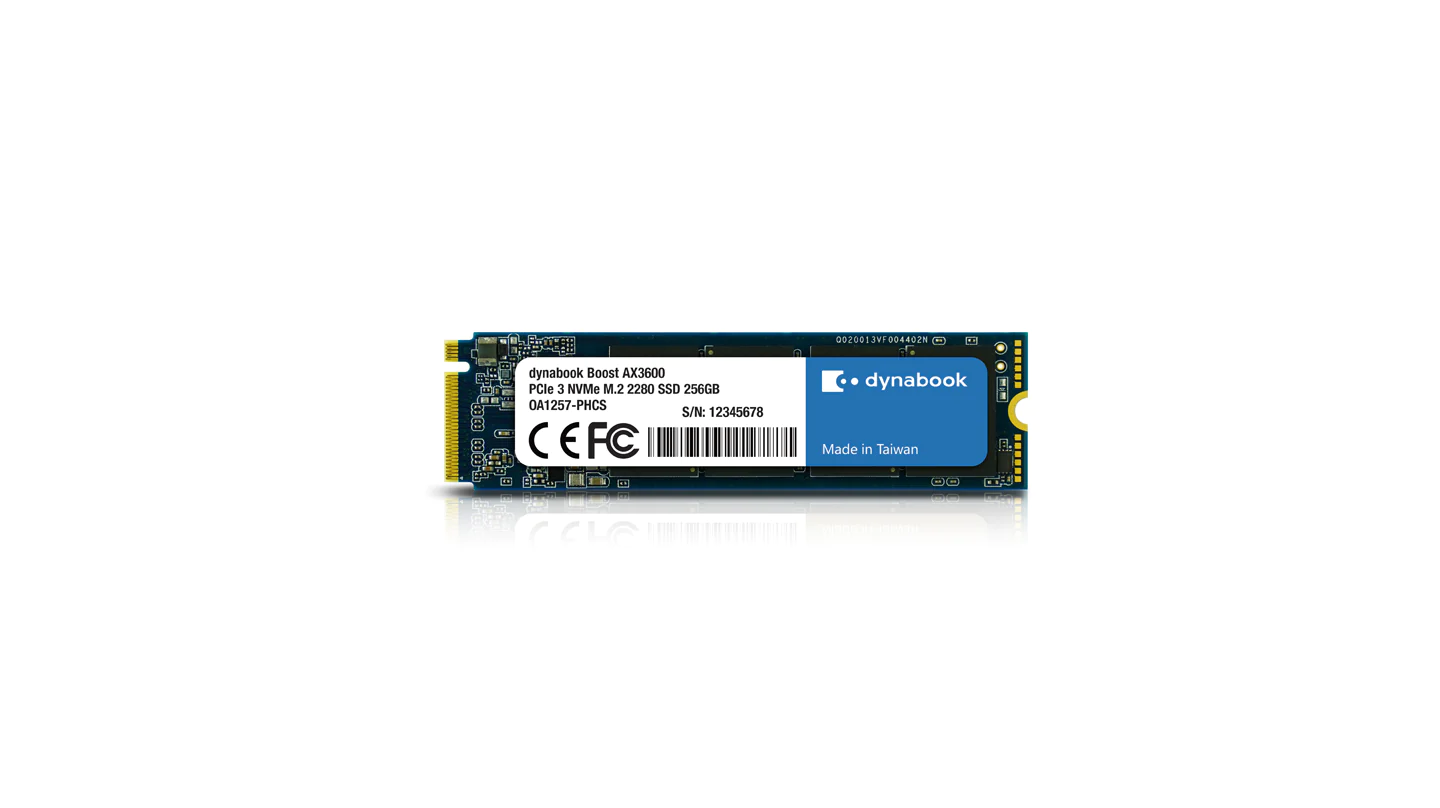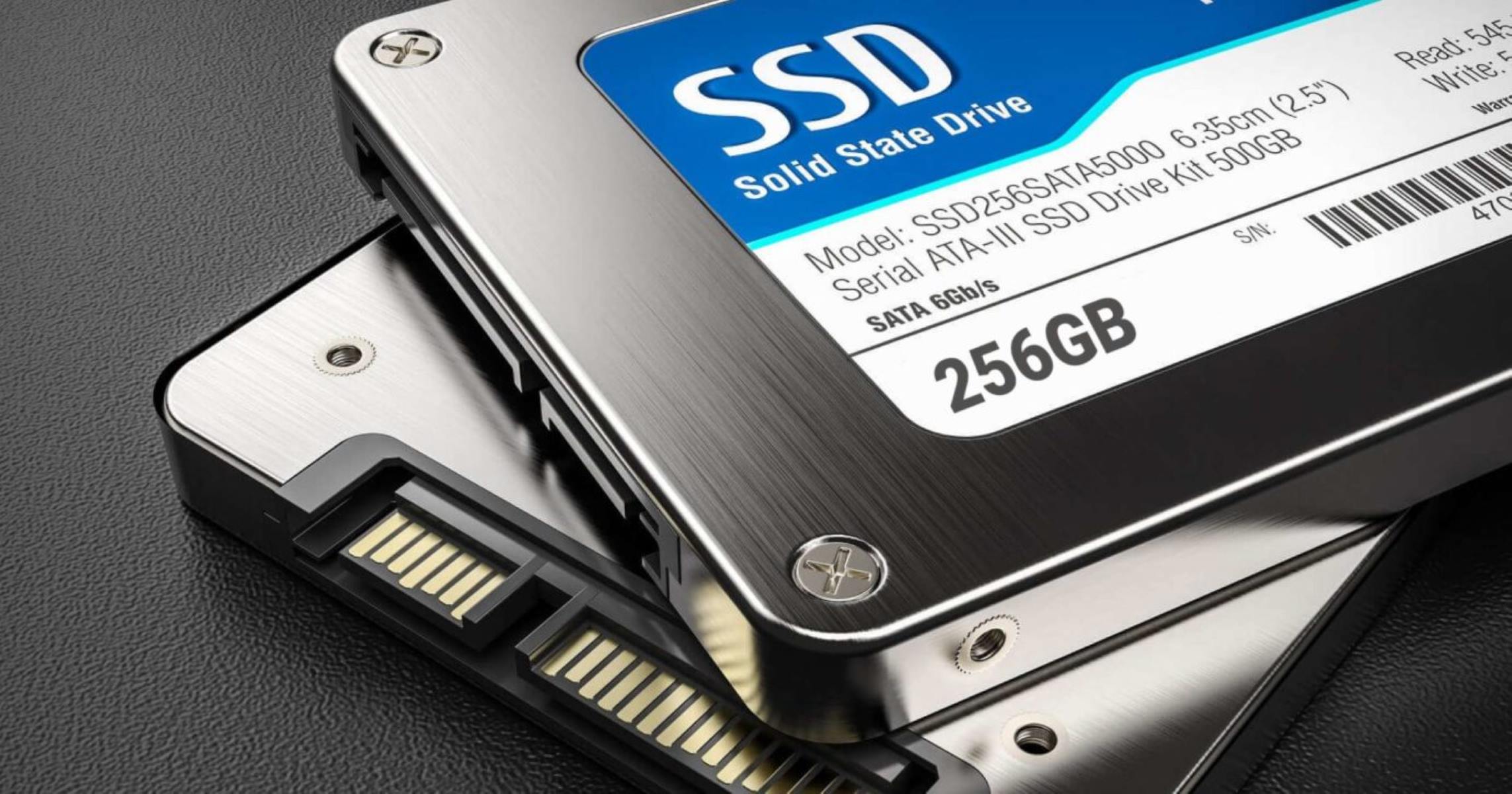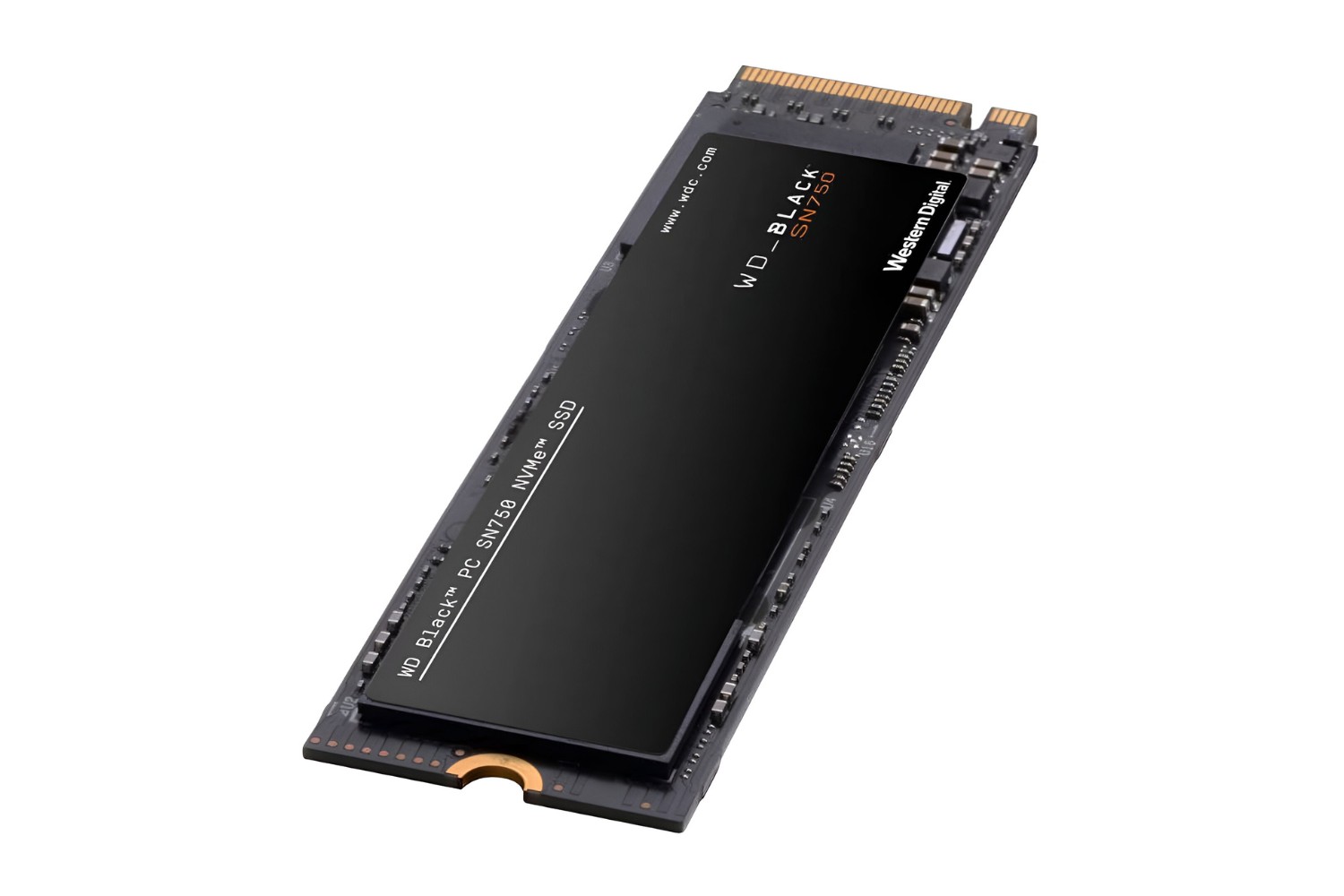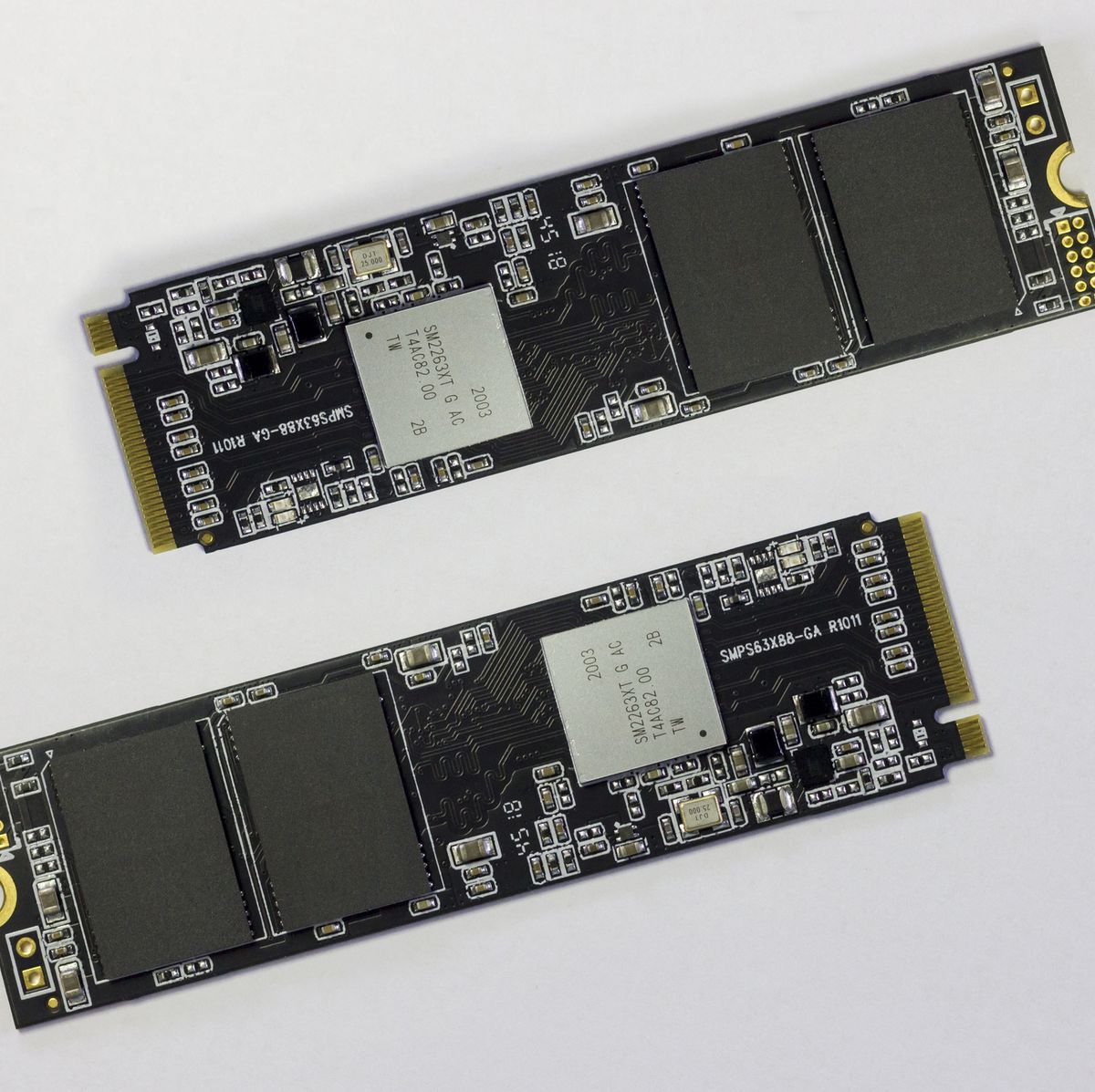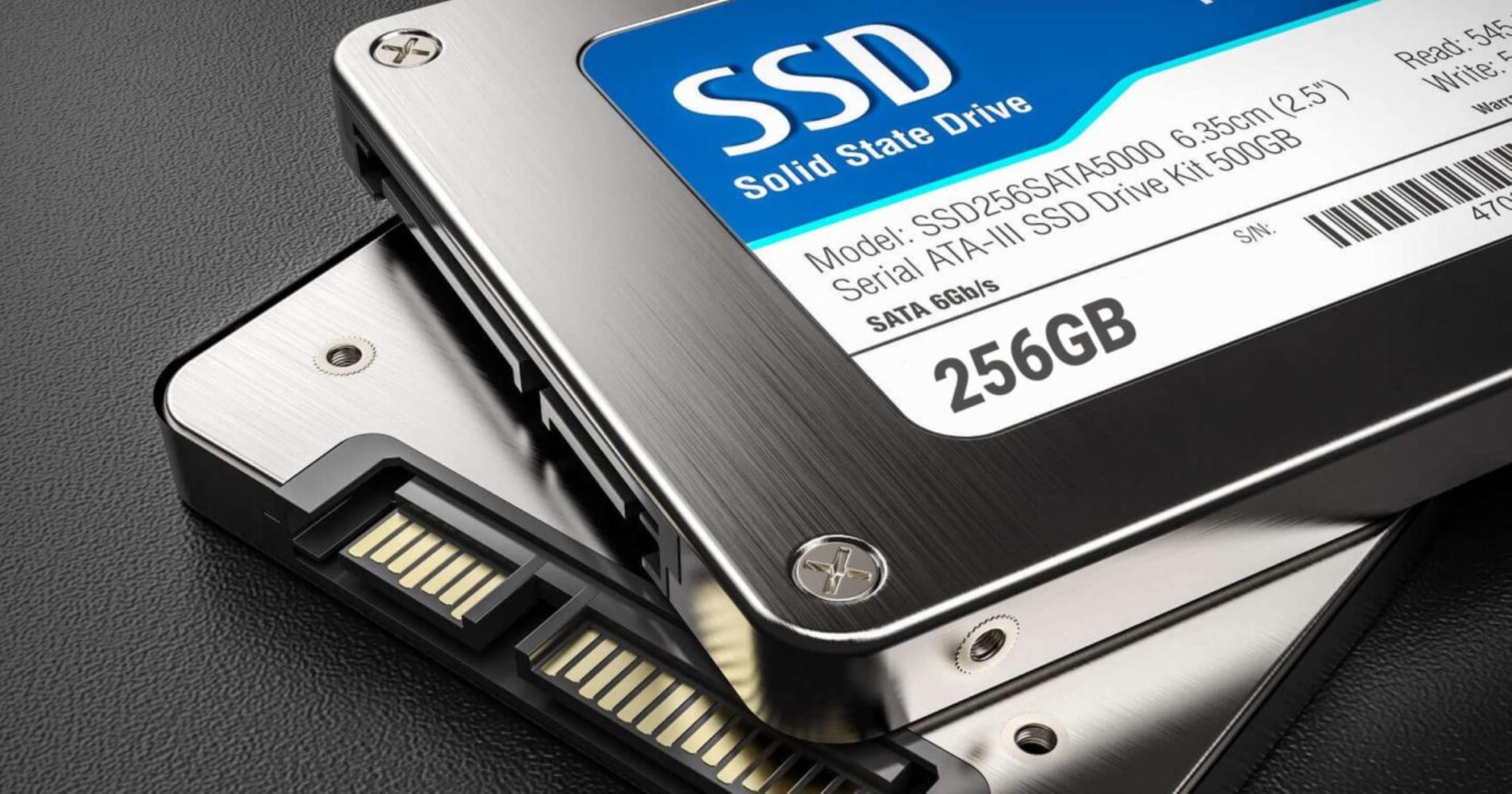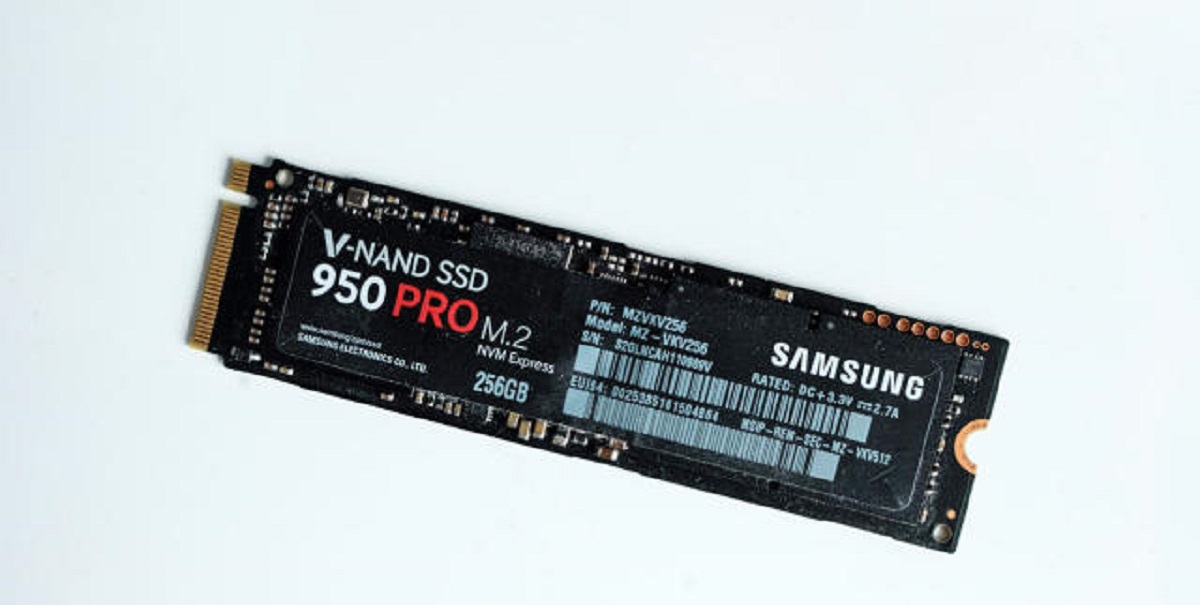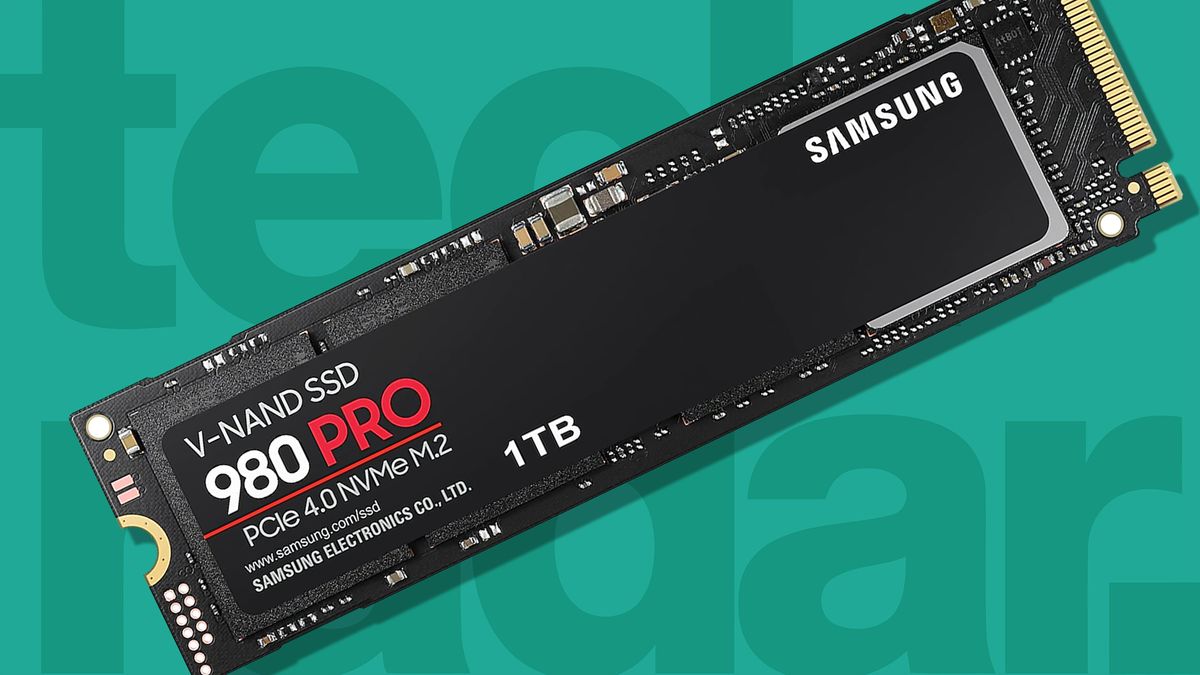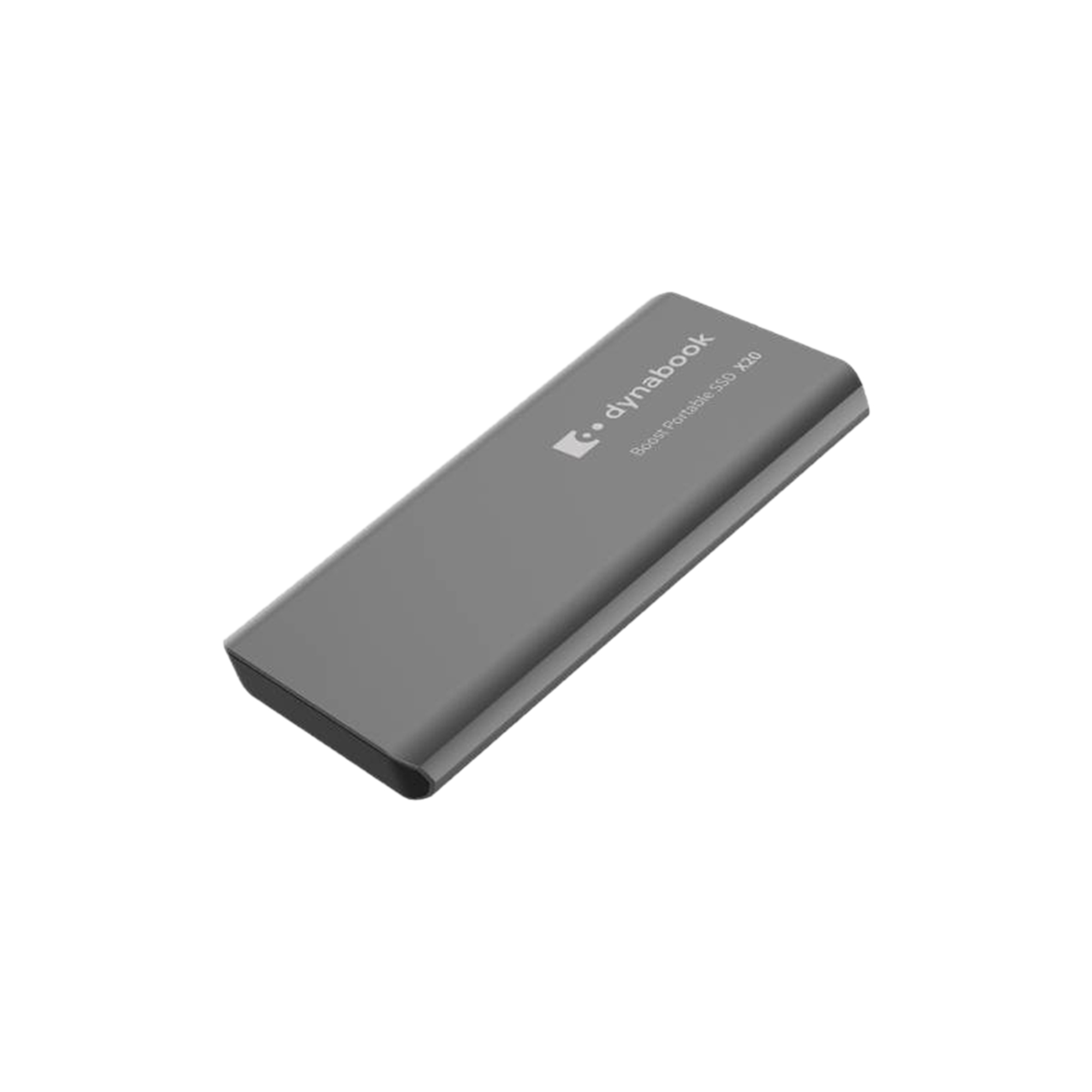Introduction
Welcome to the digital age, where we generate and consume massive amounts of data on a daily basis. From photos and videos to documents and applications, our storage needs continue to grow. As a result, traditional hard disk drives (HDDs) are being challenged by the faster and more efficient solid-state drives (SSDs).
SSD technology has revolutionized the way we store and access data. Unlike HDDs, which rely on spinning disks and mechanical read/write heads, SSDs use NAND flash memory to store data. This allows for faster data transfer speeds, higher reliability, and lower power consumption.
One of the key specifications in SSDs is the storage capacity, indicated by the number that follows the “GB” abbreviation. In this article, we will discuss what a 256GB SSD means and whether it may be the right choice for your storage needs.
Before we delve into the specifics, it’s important to note that the actual usable storage in an SSD is slightly less than the advertised capacity. This is because a small portion of the drive is reserved for firmware and overprovisioning, which helps maintain drive performance and extend its lifespan.
Now, let’s dive into the details of what exactly a 256GB SSD entails and what it can bring to the table in terms of benefits and limitations.
What is a SSD?
A Solid State Drive (SSD) is a type of storage device that uses non-volatile memory to store data. Unlike traditional hard disk drives (HDDs) that rely on spinning disks and mechanical read/write heads, SSDs use NAND flash memory chips. This means that SSDs have no moving parts, resulting in faster data access, improved durability, and lower power consumption.
SSDs have become increasingly popular due to their numerous advantages over HDDs. One of the major benefits is speed. SSDs offer significantly faster data transfer rates, allowing for quicker boot times, faster application launches, and overall improved system performance. This is especially beneficial for tasks that involve heavy data processing, such as video editing or gaming.
In addition to speed, SSDs offer enhanced durability. Without any mechanical components, SSDs are more resistant to physical shock and vibration, making them ideal for mobile devices like laptops and tablets. This also makes them a reliable choice for storing important data, as SSDs are less susceptible to mechanical failure.
Another advantage of SSDs is their energy efficiency. SSDs consume less power compared to HDDs, resulting in longer battery life for portable devices. This is particularly important for users who rely on their laptops or tablets while on the go, as it allows them to work or play for extended periods without needing to plug in their devices.
Furthermore, SSDs produce less noise and generate less heat compared to HDDs. Without any moving parts, there is no noise from spinning disks or mechanical vibrations. This makes SSDs a great choice for those who prefer a quieter computing experience. Additionally, the reduced heat generated by SSDs contributes to improved system cooling and longevity.
In summary, SSDs offer faster speeds, improved durability, lower power consumption, reduced noise, and generate less heat compared to traditional HDDs. These advantages have made SSDs the preferred choice for many individuals and businesses seeking reliable and high-performance storage solutions.
What does 256GB Mean?
When referring to storage capacity, the term “256GB” indicates that the solid-state drive (SSD) has a total storage space of 256 gigabytes. To understand what this means in practical terms, it’s important to have a clear understanding of how much data can be stored in a 256GB SSD.
In terms of file storage, a 256GB SSD can hold a significant amount of data. For example, you can store approximately:
- Over 61,000 high-quality photos (around 4MB per photo)
- Over 49 hours of Full HD video footage (at an average bitrate of 10 Mbps)
- Around 51,200 songs (at an average bitrate of 320 Kbps)
- Several large software applications or games
- A combination of various types of files and documents
Keep in mind that these figures are estimations and can vary depending on the file sizes and formats. Additionally, the operating system and pre-installed software on the SSD will also occupy some space, reducing the available capacity for user files.
It’s also important to note that not all 256GB SSDs offer the same usable storage capacity. Manufacturers often reserve a portion of the SSD’s overall capacity for firmware, system files, and overprovisioning. Overprovisioning is a technique used to improve drive performance and longevity by allocating additional space for wear leveling and garbage collection.
As a result, the actual usable space on a 256GB SSD may be slightly less than the advertised capacity. The exact amount of usable space can vary between different SSD models, but it is typically around 10-15% less than the stated capacity.
Overall, a 256GB SSD provides a generous amount of storage space for most users’ needs. It can accommodate a substantial number of files, documents, photos, and even large software applications. However, if you frequently work with large media files or require extensive storage for your projects, you may find that a higher capacity SSD or additional external storage is necessary to meet your requirements.
Now that you have a clearer understanding of what 256GB means in terms of storage capacity, we can explore the benefits and limitations of using a 256GB SSD in the next sections.
Benefits of a 256GB SSD
Choosing a 256GB solid-state drive (SSD) for your storage needs comes with a range of advantages that can greatly enhance your computing experience. Let’s explore some of the key benefits of opting for a 256GB SSD:
- Faster Performance: One of the major benefits of an SSD is its speed. A 256GB SSD can significantly improve system responsiveness, reducing boot times and speeding up the launching of applications. You’ll notice a notable difference in overall performance compared to traditional hard disk drives (HDDs).
- Efficient Storage Management: With 256GB of storage capacity, you have plenty of space to store your files, documents, and media. It provides a good balance between storage capacity and cost, allowing you to manage your data efficiently without breaking the bank.
- Portability: Many devices that utilize SSDs, such as laptops, tablets, and ultrabooks, are designed to be lightweight and portable. With a 256GB SSD, you can enjoy the benefits of high-speed storage in a compact form factor, making it easier to carry your files wherever you go.
- Reliability: SSDs are more durable and reliable than traditional HDDs. With no moving parts, they are less prone to mechanical failure due to shock, vibration, or accidental drops. A 256GB SSD offers a reliable storage solution, ensuring that your valuable data remains safe and accessible.
- Improved Battery Life: SSDs consume less power than HDDs, resulting in improved battery life for portable devices. By choosing a 256GB SSD, you can enjoy longer usage times without having to worry about running out of battery quickly.
- Quieter Operation: Unlike HDDs with spinning disks, SSDs operate silently since they have no moving parts. This creates a quieter environment, allowing you to focus on your work or entertainment without the distraction of constant mechanical noise.
Overall, a 256GB SSD provides a range of benefits that significantly enhance your computing experience. It offers faster performance, efficient storage management, portability, reliability, improved battery life, and quieter operation compared to traditional HDDs.
However, it’s important to consider your specific storage needs and requirements before making a decision. If you frequently work with large files, such as high-resolution videos or extensive graphic design projects, you may want to consider a higher-capacity SSD or supplementary external storage options. Assess your storage requirements and budget to find the best fit for your needs.
Limitations of a 256GB SSD
While a 256GB solid-state drive (SSD) offers numerous benefits, it is essential to consider its limitations before making a storage decision. Understanding these limitations will help you determine if a 256GB SSD is sufficient for your needs. Let’s explore some of the key limitations:
- Storage Capacity: The primary limitation of a 256GB SSD is its storage capacity. While it provides a substantial amount of storage, it may not be enough for users with extensive data requirements. If you frequently work with large files, such as high-resolution videos or utilize resource-intensive applications, you may find that a higher-capacity SSD or additional external storage is necessary.
- Price per Gigabyte: SSDs, including 256GB models, tend to be more expensive than traditional hard disk drives (HDDs) when comparing cost per gigabyte. While prices have been steadily decreasing, SSDs still have a higher price point. If you have a limited budget or require a large amount of storage space, an HDD might be a more cost-effective solution.
- Endurance and Lifespan: SSDs have a limited number of write cycles before their performance degrades over time. While modern SSDs are designed to endure years of normal usage, heavy write operations can impact their lifespan. However, with normal usage patterns, a 256GB SSD should provide adequate endurance for everyday tasks and typical data storage needs.
- Loss of Data when Filled to Capacity: It is important not to fill an SSD to its maximum capacity. When an SSD reaches its storage limit, its performance can decrease, and there is a higher risk of data loss in case of drive failure. It is recommended to keep some free space on the SSD to ensure optimal performance and data integrity.
- Limited Upgrade Options: Upgrading the storage capacity of a laptop or computer with a built-in 256GB SSD may be challenging. Unlike HDDs, which can easily be replaced or expanded, SSD upgrades often require specific models that are compatible with the device’s interface, form factor, and firmware. It’s important to research the upgrade options for your specific device before making a storage decision.
These limitations should be carefully considered, especially if you have specific storage requirements or anticipate future growth in your storage needs. While a 256GB SSD offers many advantages, it’s essential to evaluate these limitations against your budget, data usage, and potential future needs to ensure that it meets your storage requirements effectively.
Is 256GB SSD Enough for Your Needs?
Deciding whether a 256GB solid-state drive (SSD) is enough for your needs depends on several factors, including your data storage requirements, usage patterns, and budget. Let’s explore some considerations to help you determine if a 256GB SSD is sufficient for your needs:
Data Storage Requirements: Assess the types of files you regularly work with and the amount of data you need to store. If you primarily work with small files or documents and do not accumulate a large media library, a 256GB SSD can provide ample storage capacity. However, if you frequently work with large files, such as high-resolution videos or extensive databases, you may find that a higher-capacity SSD or additional external storage is necessary.
Usage Patterns: Consider your typical usage patterns and the applications you regularly use. If you primarily use your device for web browsing, word processing, and light media consumption, a 256GB SSD can fulfill your storage needs. However, if you engage in activities that require more storage space, such as video editing, gaming, or running resource-intensive software, a larger capacity SSD may be more suitable.
Future Growth: Consider your future storage needs. If you anticipate your data storage requirements increasing over time, it may be wise to opt for a higher-capacity SSD from the outset. This will provide you with ample space to grow into and avoid the need for frequent data management or upgrading.
Budget: Evaluate your budget and storage priorities. SSDs, including 256GB models, tend to be more expensive compared to traditional hard disk drives (HDDs) in terms of cost per gigabyte. If you have a limited budget and require a large amount of storage, an HDD may be a more affordable option. However, it’s important to weigh this against the advantages of SSDs in terms of performance, reliability, and power efficiency.
Ultimately, the decision of whether a 256GB SSD is sufficient for your needs will depend on your individual circumstances. Assess your data storage requirements, usage patterns, anticipated future growth, and budget to make an informed decision. If you find that a 256GB SSD falls short of your needs, you may consider options such as external storage devices or cloud storage to supplement your storage capacity.
Remember to regularly evaluate your data storage needs to ensure that you have the appropriate storage solution to accommodate your changing requirements over time.
How to Upgrade Your SSD Storage
If you find that your current storage capacity is no longer sufficient, fear not! Upgrading your solid-state drive (SSD) storage is not as daunting as it may seem. Here are some steps to guide you through the process:
- Assess Your Storage Needs: Determine the amount of storage capacity you require. Consider your current usage patterns, anticipated future needs, and budget to determine the desired capacity for your upgraded SSD.
- Compatibility Check: Ensure that your device is compatible with the desired SSD upgrade. Verify the form factor, connection interface (e.g., SATA or NVMe), and any specific compatibility requirements for your device.
- Backup Your Data: Before proceeding with the upgrade, it’s crucial to back up your data to prevent potential data loss. This can be done using external storage devices, cloud storage services, or backup software tools.
- Choose an SSD: Research and select an SSD model that suits your requirements. Consider factors such as performance, storage capacity, reliability, and reviews from reputable sources.
- Prepare for Installation: Gather the necessary tools and equipment, such as screwdrivers or specialized SSD installation kits. Read the SSD manufacturer’s instructions or online guides to familiarize yourself with the installation process specific to your device.
- Perform the Upgrade: Open your device, locate the existing SSD, and carefully disconnect it. Install the new SSD in the designated slot, ensuring proper connection and alignment. Be mindful of static electricity and handle the SSD and components with care.
- Restore Your Data: Once the new SSD is installed, you can restore your backed-up data. This can be done by transferring the data from your external storage device, downloading it from the cloud, or using backup restoration tools.
- Verify and Test: After the data has been restored, ensure that the new SSD is functioning correctly. Test its performance, verify that the storage capacity is recognized accurately, and check for any potential issues or errors.
- Dispose of the Old SSD: If your old SSD is still functional, consider securely erasing any sensitive data before disposing of or repurposing it. You can use specialized software or consult the SSD manufacturer’s instructions for proper data erasure methods.
It’s important to note that the upgrade process may differ slightly depending on your specific device and SSD model. Reading the manufacturer’s instructions and seeking guidance from reputable sources can provide valuable insights and ensure a successful upgrade.
Remember to take necessary precautions and consult professional assistance if you’re unsure about any step of the process. With careful planning and execution, upgrading your SSD storage can significantly enhance your device’s performance and provide you with the storage capacity you need.
Conclusion
In conclusion, a 256GB solid-state drive (SSD) can offer a range of benefits in terms of performance, efficiency, and reliability. It provides ample storage capacity for most users’ needs, allowing for the storage of various files, documents, and even medium-sized media libraries.
The speed and responsiveness of a 256GB SSD can greatly enhance your computing experience, resulting in faster boot times, quicker application launches, and improved overall system performance. The durability and energy efficiency of SSDs make them an excellent choice for portable devices, providing longer battery life and a quieter operation.
However, it’s crucial to consider the limitations of a 256GB SSD, such as its storage capacity, price per gigabyte, and the necessity for future growth. Depending on your specific storage needs and usage patterns, it may be necessary to consider a higher-capacity SSD or supplementary storage options such as external drives or cloud storage.
If you determine that a storage upgrade is required, the process of upgrading your SSD can be relatively straightforward. By assessing your storage needs, ensuring compatibility, backing up your data, selecting the right SSD, and following proper installation procedures, you can successfully upgrade your storage capacity and enjoy the benefits that come with it.
In the end, the decision to choose a 256GB SSD or opt for a different storage solution depends on your unique circumstances. Consider factors such as data storage requirements, usage patterns, future growth, and budget to make an informed decision that meets your specific needs.
Remember, technology is ever-evolving, and storage needs may continue to increase. Regularly assessing and evaluating your storage requirements will ensure that you have the appropriate storage solution to support your computing needs effectively.







